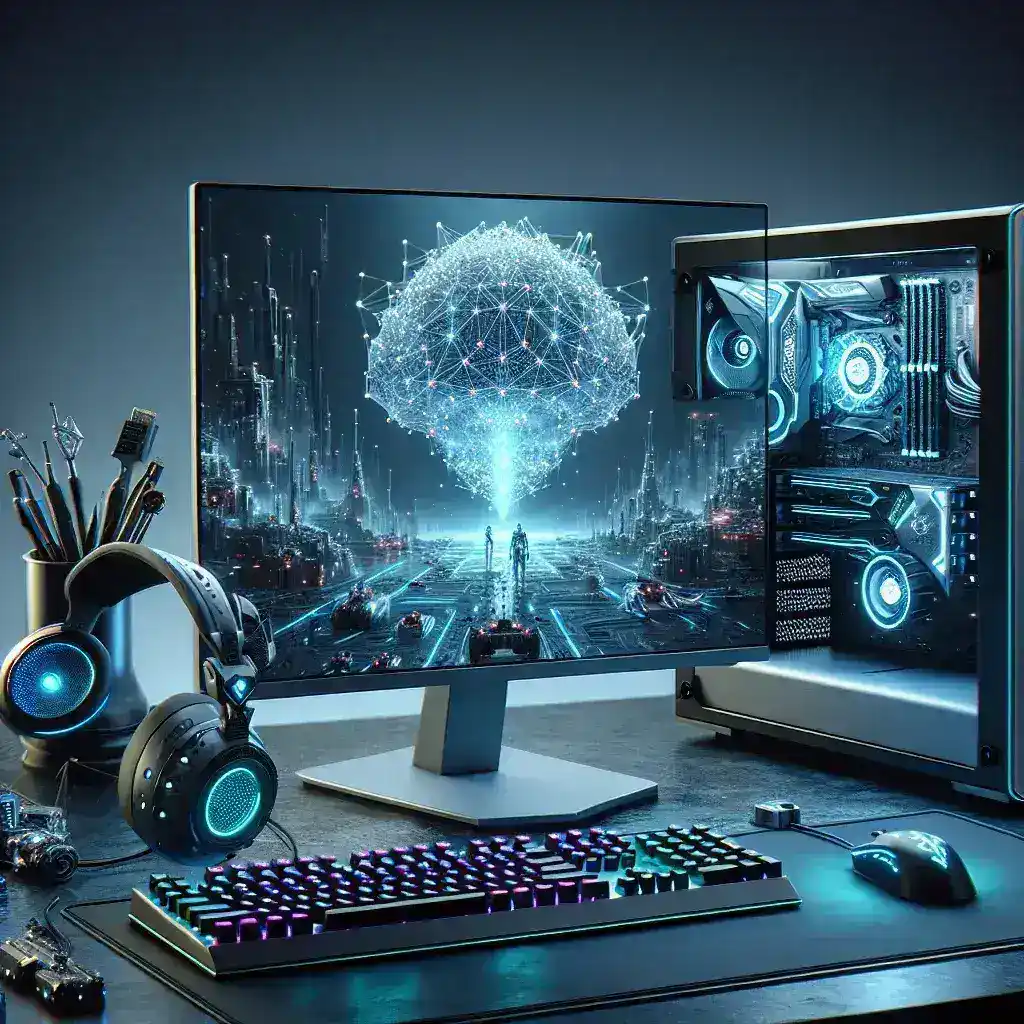How do gaming PCs benefit from AI-enhanced anti-aliasing techniques?
In the world of gaming, advancements are rapid and consistent. One of the most remarkable developments in recent years is the integration of artificial intelligence (AI) into graphics rendering, particularly through AI-enhanced anti-aliasing techniques. This cutting-edge technology promises to elevate both the visual quality and performance of gaming PCs, providing gamers with an immersive experience like never before.
1. Understanding Anti-Aliasing
Anti-aliasing is a technique used in computer graphics to smooth out the jagged edges that often appear on diagonal and curved surfaces. These jagged edges, also known as ‘aliasing,’ can degrade the overall visual quality of a game. Anti-aliasing mitigates this effect, creating smoother, more natural-looking images.
Comparing Different Anti-Aliasing Techniques
| Type | Method | Performance Impact | Visual Quality |
|---|---|---|---|
| SSAA (Supersampling Anti-Aliasing) | Renders at a higher resolution, then downsamples | High | Excellent |
| MSAA (Multisample Anti-Aliasing) | Samples multiple points in each pixel | Moderate | Good |
| FXAA (Fast Approximate Anti-Aliasing) | Smooths image after rendering | Low | Moderate |
| TAA (Temporal Anti-Aliasing) | Uses data from previous frames | Low to Moderate | Good |
| DLSS (Deep Learning Super Sampling) | Uses AI to enhance image quality | Low | Excellent |
Traditionally, techniques like SSAA, MSAA, FXAA, and TAA have been employed. However, each has its trade-offs between performance and quality. Enter AI-enhanced anti-aliasing techniques, which offer remarkably improved results.
2. AI-Enhanced Anti-Aliasing Explained
AI-enhanced anti-aliasing utilizes machine learning algorithms to predict the best possible way to smooth out edges. NVIDIA’s Deep Learning Super Sampling (DLSS) is an excellent example of this technology. DLSS leverages neural networks to analyze low-resolution images and intelligently enhance them to near-native resolution, producing stunning visual quality with minimal performance impact.
3. Benefits of AI-Enhanced Anti-Aliasing
Improved Visual Quality
AI-enhanced techniques can offer superior visual fidelity by analyzing vast amounts of data and learning to predict the best visual outcome. The result is smoother edges, less noise, and a more realistic gaming environment.
Performance Boost
One of the significant advantages of AI-driven anti-aliasing is the ability to achieve high-quality visuals without the hefty performance cost. Traditional methods like SSAA are computationally expensive, but AI techniques such as DLSS deliver comparable, if not better, visual quality with significantly less impact on frame rates.
Future-Proofing Gaming PCs
AI-enhanced anti-aliasing techniques are continually evolving. As machine learning models are trained on more data and optimized for better performance, gaming PCs equipped with these technologies will remain at the cutting edge of visual quality for years to come. Investing in a gaming PC with AI-enhanced capabilities is a future-proof decision.
4. Real-World Applications
Enhanced User Experience
Gamers who have experienced AI-enhanced anti-aliasing often report a substantial upgrade in their gaming experience. The scenes are more vibrant, movements are smoother, and the overall immersion is richer.
Energy Efficiency
AI techniques like DLSS do more with less hardware, leading to better energy efficiency. Gamers can enjoy longer sessions without worrying about their systems overheating or consuming excessive power.
5. Considerations for Implementation
While AI-enhanced anti-aliasing offers numerous benefits, there are considerations to keep in mind. Training AI models requires vast amounts of data and computational power. Additionally, the quality of the AI model’s output relies heavily on the quality of the data it was trained on.
6. Conclusion
AI-enhanced anti-aliasing techniques represent a significant leap forward in gaming graphics technology. By balancing superior visual quality with performance efficiency, these methods are set to revolutionize the gaming experience. As the technology continues to develop, the potential for even greater enhancements in visual fidelity and gaming immersion is immense.
Investing in a gaming PC that supports AI-enhanced anti-aliasing is not just about enjoying today’s games at their best—it’s about preparing for a future where AI-driven graphics are the standard. The evolution of anti-aliasing, powered by AI, promises a bright and visually stunning future for gamers worldwide.

